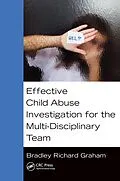Child abuse cases are unique in that they involve seldomly witnessed acts. A nonverbal victim and a silent perpetrator will often lead to a stalling of the investigation and the judicial process. Effective Child Abuse Investigation for the Multi-Disciplinary Team is a practical guide for law enforcement officers and child protection workers in abus
Inhalt
Introduction. Investigative Plan. Allegation and Disclosure. Suspect Information. Child Forensic Interview. Medical Evaluation. Multi-disciplinary Response. The Nonoffending Parent as a Witness. Other Witnesses. Crime Scene. Accelerated Timeline for Suspect Contact. Accidental versus Nonaccidental Trauma. Fractures. Sentinel Bruising. Biting. Fall Injuries and Abusive Head Trauma. Assessment. Abusive Head Trauma. Timeline of AHT/SBS. Triggers for Abuse. Crying. Behaviors. Economic Stressors. Common Defenses. Osteogenesis Imperfecta. Fractures from Birth. Violent Coughing. Corporal Punishment. Religion and Child Abuse. Protective Custody. Probable Cause. Imminent Danger. Multiple Siblings. Administrative Issues. Investigative Bias. Female Sex Offenders. Media Bias. Investigative and Judicial Bias. Older Victims. Investigative Considerations. Multi-disciplinary Teams. Best Practices. Child Advocacy Centers. Case Review. Outside Agency Investigations. Information Sharing. Trial Testimony. Investigative Process. Professional Background. Presentation. Debrief. Child Development. Sexual Development. Sexual Play. Physical Development. Terminology. Head. Fractures. Medical Terms. Plausible versus Actual. References. Appendix A: Question Sets. Medical Questions. Caretaker Questions. Appendix B: Pediatric Abuse Investigation Checklist. for First Responders. Appendix C: Investigative Timeline Checklist. Index.
